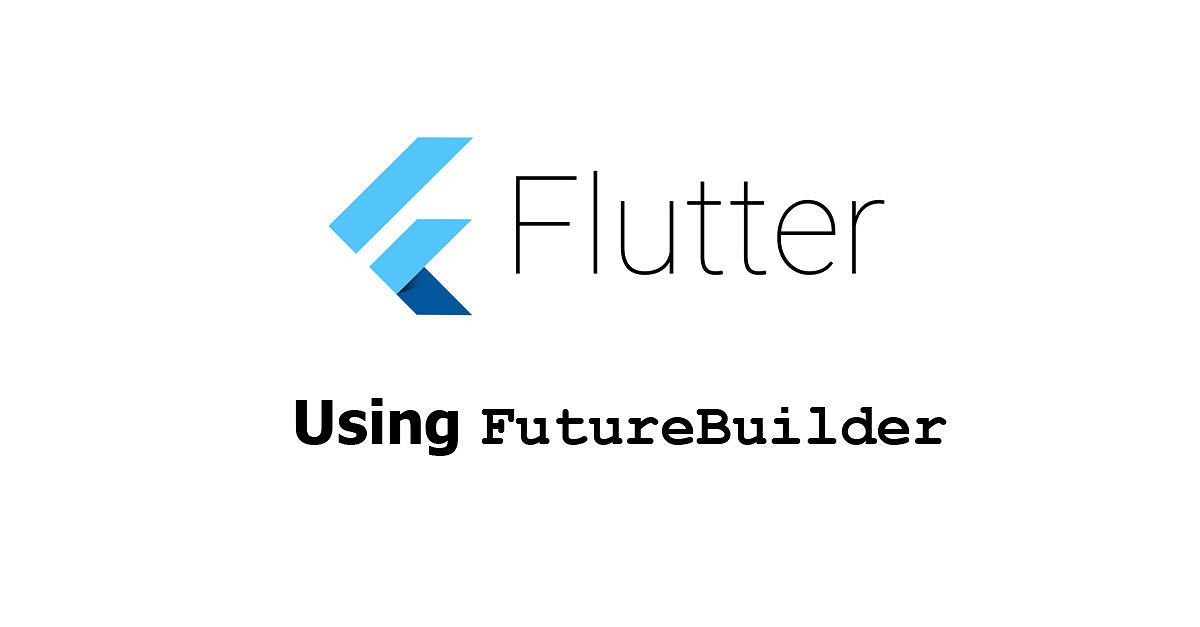Harnessing the Power of FutureBuilder in Flutter: A Practical Guide
 Ashu
Ashu
Flutter, Google's versatile UI toolkit, provides developers with powerful tools to create robust and responsive applications. Among these tools, the FutureBuilder widget stands out as an essential component for handling asynchronous operations and updating the UI based on the results. In this article, we'll explore the capabilities of FutureBuilder in Flutter and learn how to wield its potential in various scenarios.
Understanding Futures
In Flutter, a Future represents a potential value or error that will be available at some time in the future. It's commonly used for asynchronous operations such as fetching data from a network or reading from a local database. Futures provide a clean and structured way to work with asynchronous code in a synchronous manner.
dartCopy code// Example of a simple Future
Future<int> fetchNumber() async {
await Future.delayed(Duration(seconds: 2));
return 42;
}
void main() async {
final result = await fetchNumber();
print('Fetched number: $result');
}
In this example, the fetchNumber function returns a Future<int> that completes with the value 42 after a delay of 2 seconds. The await keyword is used to wait for the future to complete before proceeding.
Introducing FutureBuilder
The FutureBuilder widget in Flutter simplifies the process of working with Future objects in the UI. It takes a Future and a callback function, allowing you to rebuild parts of your UI based on the completion state of the future.
dartCopy codeFutureBuilder<int>(
future: fetchNumber(),
builder: (context, snapshot) {
if (snapshot.connectionState == ConnectionState.done) {
if (snapshot.hasError) {
return Text('Error: ${snapshot.error}');
} else {
return Text('Fetched number: ${snapshot.data}');
}
} else {
return Text('Fetching...');
}
},
)
In this example, the FutureBuilder listens to the fetchNumber future and updates the UI based on its completion state. It handles scenarios where the future is done with or without an error and when it's still in progress.
Real-World Usage
FutureBuilder is a valuable tool in Flutter development, particularly when dealing with tasks like fetching data from APIs, reading files, or any other operation that involves waiting for a result. For instance, consider fetching user data from a remote server:
dartCopy codeFuture<User> fetchUser() async {
// Fetch user data from the server
}
FutureBuilder<User>(
future: fetchUser(),
builder: (context, snapshot) {
if (snapshot.connectionState == ConnectionState.done) {
if (snapshot.hasError) {
return Text('Failed to fetch user data');
} else {
final user = snapshot.data;
return UserProfileWidget(user: user);
}
} else {
return CircularProgressIndicator();
}
},
)
Here, the FutureBuilder is used to fetch user data, and the UI is updated accordingly when the future completes.
Conclusion
Understanding and effectively using FutureBuilder can greatly simplify the process of integrating asynchronous operations into your Flutter applications. Whether you're fetching data from a network, reading from a database, or performing any other asynchronous task, FutureBuilder provides a clean and concise way to handle the UI updates based on the completion state of the future.
By incorporating FutureBuilder into your Flutter projects, you can create more responsive and user-friendly applications that gracefully handle asynchronous operations, providing a seamless experience for your users.
Subscribe to my newsletter
Read articles from Ashu directly inside your inbox. Subscribe to the newsletter, and don't miss out.
Written by

Ashu
Ashu
"I'm an open-source contributor at GirlScript Summer of Code, currently pursuing my master's degree in computer applications at Vellore Institute of Technology. With a strong foundation in IT and software development, I previously interned at CollegeStuff, where I optimized UI/UX using HTML/CSS, Bootstrap, jQuery, Flutter, and Dart. I boosted site speed by 15%, decreased the bounce rate by 10%, and received positive feedback. Proficient in PHP, Python, JavaScript, and C/C++, I'm passionate about problem-solving and eager to explore new technologies. Let's connect on LinkedIn for potential collaborations!"